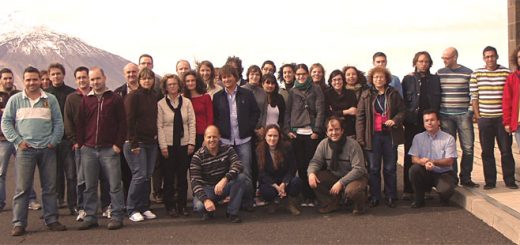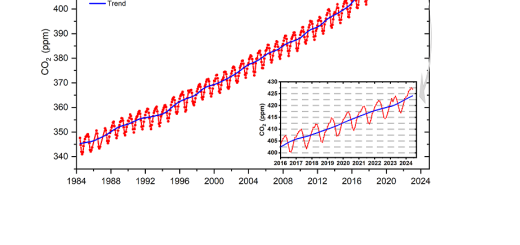Publication of the paper “Impacts of Desert Dust Outbreaks on Air Quality in Urban Areas”
The journal Atmosphere has published a new study “Impacts of Desert Dust Outbreaks on Air Quality in Urban Areas”.
In this study we investigate the influence of desert dust outbreaks on air quality in Santa Cruz de Tenerife using air-quality observations and data of the vertical structure of the atmosphere from a six-year period (2012–2017).
The most active global dust source regions are located in a broad band or “dust belt” extending from the west coast of North Africa through the Middle East to central Asia (Figure 1). Santa Cruz de Tenerife is a city located close to these dust sources, in the dust export pathway off the west coast of North Africa.
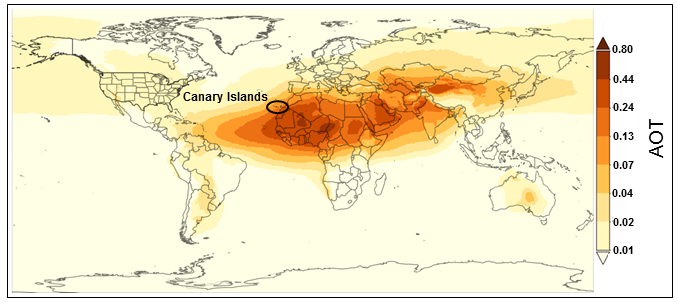
Figure 1. Annual mean distribution of dust extinction Aerosol Optical Thickness (AOT) in 2017, highlighting the location of the dust belt, the westward transport of dust to the Americas, and the location of the Canary Islands.
We found that particulate concentrations increased more during winter dust outbreaks (December-March), with increases by a factor of 7 in PM10 daily mean concentrations (from 14 μg m-3 to 98 μg m-3) and by a factor of 5 (from 6 μg m-3 to 32 μg m-3) in PM2.5 daily mean concentrations during the more intense winter dust outbreaks. Increases were less during summer (July-August) outbreaks, with a tripling of PM10 and PM2.5 daily mean concentrations.
In addition, we found that desert dust outbreaks reduced the height of the marine boundary layer (the lowest layer of the atmosphere) in our study area by more than 45%, on average, in summer and by ~ 25%, on average, in winter (Figure 2) .
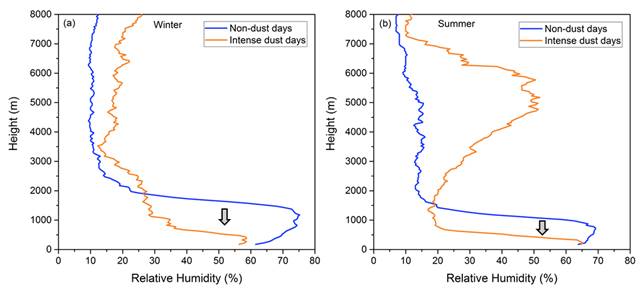
Figure 2. Vertical profiles of median relative humidity (%) from radiosonde observations for non-dust days and intense-dust days shown for (a) winter dust outbreaks (December–March) and (b) summer dust outbreaks (July–August), 2012 to 2017. The vertical scale indicates the height from 0 to 8000 m.
This thinning of the marine boundary layer was associated with an increase of local anthropogenic pollution during dust outbreaks. Nitrogen dioxide (NO2) and nitric oxide (NO) mean concentrations more than doubled and black carbon concentrations increased by a factor of 3.4 during the more intense summer dust outbreaks (Figure 3). Increases in the local anthropogenic pollution also occurred during the winter outbreaks but were less than in summer.
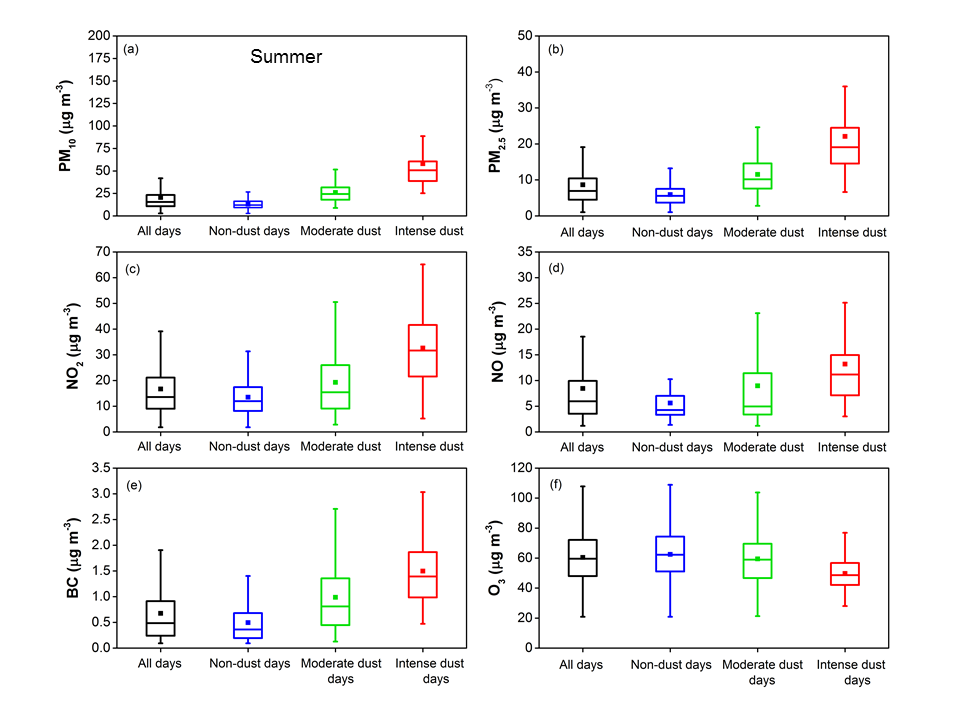
Figure 3. Mean (24-h) concentrations of (a) PM10; (b) PM2.5; (c) NO2; (d) NO; (e) Black Carbon (BC) ≤ 10 μm, and f) Ozone (O3) calculated for all days, non-dust outbreak days, and different intensities of dust outbreaks during summer (July-August): The horizontal lines and the squares within the box represent the median and mean values, respectively, while the bottom and top of each box are the 25th and 75th percentiles. The whiskers are the 5th and 95th percentiles. All data are for the 2012 to 2017 period except for black carbon data, which are for 2014–2017.
The results of this study have public health implications. The European Commission established that, for the purposes of compliance with current legislation regarding particulate matter (PM10 and PM2.5), the exceedances of the limit values (annual and daily) may be discounted provided it is demonstrated that these values are exceeded due to the influence of contributions from natural sources, as is the case with desert dust. However, from a public health point of view, not only do desert dust outbreaks increase the levels of PM10 and PM2.5, but they also establish meteorological conditions that enhance the local anthropogenic pollution (e.g. nitrogen oxides, carbon monoxide, black carbon, and sulphur dioxide), therefore worsening the air quality in those cities affected by desert dust intrusions.
Therefore, the conclusion of this study is that local anthropogenic emissions should be further reduced in areas affected by desert dust outbreaks if we want to achieve the health benefits we expect from emission reduction strategies. This is of particular importance for urban areas strongly and frequently impacted by dust outbreaks, and these conclusions need to be taken account of in other geographical areas strongly impacted by desert dust outbreaks such as the Mediterranean, North Africa, the Middle East and Asia.
For more details about this work please refer to:
Milford, C.; Cuevas, E.; Marrero, C.L.; Bustos, J.; Gallo, V.; Rodríguez, S.; Romero-Campos, P.M.; Torres, C. Impacts of Desert Dust Outbreaks on Air Quality in Urban Areas. Atmosphere 2020, 11, 23. https://doi.org/10.3390/atmos11010023
The paper can be downloaded from: https://www.mdpi.com/2073-4433/11/1/23

